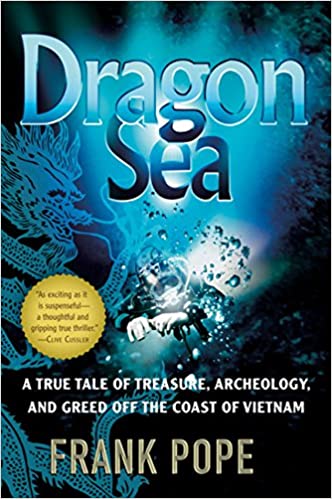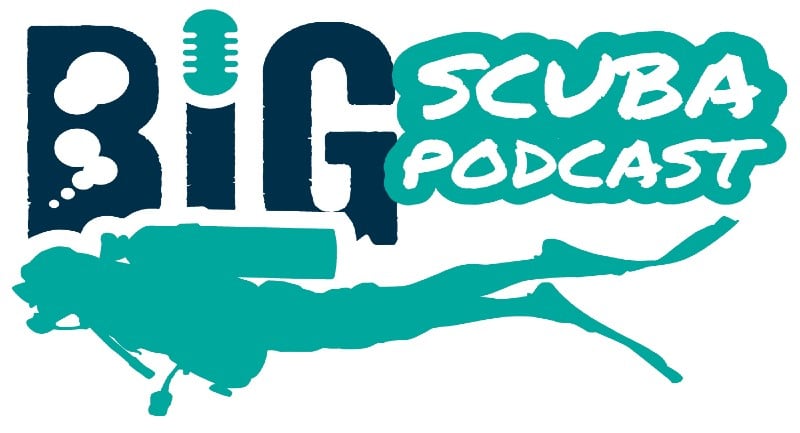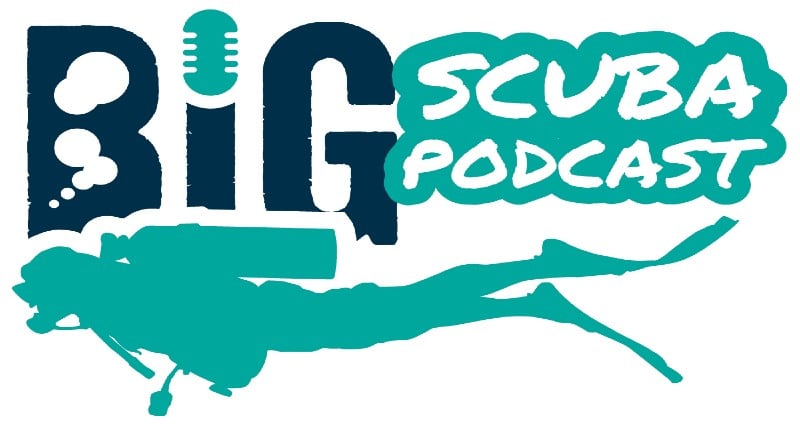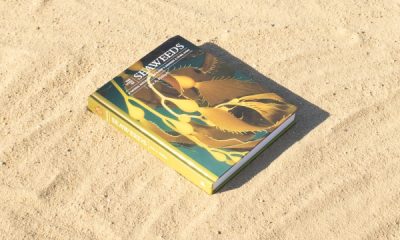Miscellaneous Blogs
Book Review: Dragon Sea (2007) by Frank Pope

Dragon Sea, by Frank Pope, tells the true story of the location, combined archaeological survey of a large, five-hundred year old wreck and salvage of over 250,000 Vietnamese ceramic artefacts from the Hoi Ann shipwreck. It also charts the complex negotiation with government departments, legal and cultural bodies in Vietnam, as well as international groups, which had a vested interest in the outcome of the excavations and sale of artefacts.
 It was a sensitive and expensive project. The ransacking of ancient Chinese porcelain artefacts from the wreck of the Dutch East India Company Geldermalsen, a few years earlier, had generated US$20 Million at auction but prompted furious international condemnation at the destruction of the wreck site for profit. In addition to managerial and ethical problems, the Vietnamese Hoi Ann shipwreck rested on the seabed over seventy metres below the surface in the turbulent and typhoon prone South China Sea. It would be a testing site on which to work.
It was a sensitive and expensive project. The ransacking of ancient Chinese porcelain artefacts from the wreck of the Dutch East India Company Geldermalsen, a few years earlier, had generated US$20 Million at auction but prompted furious international condemnation at the destruction of the wreck site for profit. In addition to managerial and ethical problems, the Vietnamese Hoi Ann shipwreck rested on the seabed over seventy metres below the surface in the turbulent and typhoon prone South China Sea. It would be a testing site on which to work.
At the outset the endeavour seemed to offer so much to everyone involved. The wreck site was a time capsule, sealed on the day of its sinking. It offered insights into Vietnamese culture and ceramics made during the golden days of the civilization. The Chief Archaeologist explained “shipwrecks preserve information in a way that very few land sites could – by freezing a moment in time” (p. 8).There was the prospect of huge financial rewards to the businessman leading the consortium of investors. Divers and technicians, managers and workmen, as well as Vietnamese institutions, all stood to benefit.
In his account Frank Pope combines the excitement of both archaeologists and accountants as pristine artefacts are uncovered and brought to the surface. His descriptions are vivid: “fragile kendis and ewers, vases, and large blue-and-white storage jars had cascaded down as the wood around them disintegrated” (p. 196). The numerous sketches Pope includes in his book are useful, but actual photographs of some of the artefacts and scenes would have been a valuable addition.
Throughout the book a central theme emerges; it’s the cost cutting measures under which the project operated. The author reveals how these pressures and accompanying resentments grew within the team as a result of these measures. For the divers, their work time in saturation (living inside a pressurized chamber breathing helium and oxygen, and working at seventy metres plus) was extended far beyond the recognised limit. Eventually, when they emerge after fifty-nine days of saturation diving, they were “thin and bearded, their skin yellowed and covered in rashes and lesions” (p.259).
Calm waters do not typify the South China Sea – especially as the typhoon season approaches. A recreational diver may experience surge, current and turbulent water; but is not working for twelve hours a day, for weeks, at a depth of more than seventy metres! The effect of surface sea conditions on a dive platform, waves and swell, are magnified underwater. The diving bell and the umbilical attached to a diver are continuously wrenched up and dropped down in the current. Even in calmer conditions the process of negotiating the metal grid positioned over the wreck is problematic. It “was like trying to clamber through a climbing frame on a moonless night with a gale blowing, wearing full dive gear, trailing a cable and carrying a heavy basket of fragile ceramics” (p.209).
Pope skilfully describes the changing atmosphere surrounding the project – both above the water and below. Close, personal friendships become strained as fatigue and adverse weather, financial constraints and day to day problems begin to overwhelm those involved. The uneasy balance between rigorous archaeological practise and the economic need to recover artefacts takes centre stage. The Chief Archaeologist “couldn’t shake the fear that despite his instructions, the divers were ignoring anything that wasn’t ceramic.” The businessman believed the actions of the archaeologist were sabotaging the recovery of artefacts. The crescendo, the sale of the artefacts from the Hoi Ann shipwreck, is not what you may have expected.
Perhaps the outstanding feature of Dragon Sea is the way Frank Pope succeeds in building a relationship between the main characters and the reader. You want a diver to survive, another character to change, broken relationships mended. The closing sections provide a pleasant summary of what subsequently happened to them. However, perhaps the most salutary comment is reserved for the state of marine archaeology in many parts of the world. Frank Pope writes “In most of Southeast Asia, however, it is still open season on the seabed.” (p. 315)
Dragon Sea (2007)
- By Frank Pope
- New York: Harcourt Books
- ISBN 9780156033299
- 341 pp
Frank Pope obtained a degree in Zoology from Edinburgh University and is Ocean Correspondent for The Times newspaper. He has worked on underwater expeditions under the auspices of Oxford MARE (Maritime Archeological Research and Excavation), including the salvage of Lord Nelson’s flagship Agamemnon. His most recent book is 72 hours (2013); the Royal Navy’s dramatic race to save the crew trapped inside a Russian submarine.
Find out more about Professor Fred Lockwood, who is also a published author, at www.fredlockwood.co.uk.
Blogs
The BiG Scuba Podcast Episode 173: DEEP – Making Humans Aquatic

Gemma and Ian visited DEEP and were hosted by Phil Short, Research Diving, Training Lead, and were given a tour of the facility at Avonmouth and then over to the Campus at Tidenham.
DEEP is evolving how humans access, explore and inhabit underwater environments. Through flexible, modular and mobile subsea habitats that allow humans to live undersea up to 200m for up to 28 days, work-class submarines, and advanced human performance research, DEEP completely transforms what we are capable of underwater and how we conduct undersea science and research.
You can listen to Episode 173 of the BiG Scuba Podcast here.
We hope you have enjoyed this episode of The BiG Scuba Podcast. Please give us ★★★★★, leave a review, and tell your friends about us as each share and like makes a difference. Contact Gemma and Ian with your messages, ideas and feedback via The BiG Scuba Bat Phone +44 7810 005924 or use our social media platforms. To keep up to date with the latest news, follow us:
We are on Instagram @thebigscuba
We are on Facebook @thebigscuba
We are in LinkedIn https://www.linkedin.com/in/ian%F0%9F%A6%88-last-325b101b7/
The BiG Scuba Website www.thebigscuba.com
Amazon Store : https://www.amazon.co.uk/shop/thebigscuba
Visit https://www.patreon.com/thebigscubapodcast and subscribe – Super quick and easy to do and it makes a massive difference. Thank you.
Blogs
The BiG Scuba Podcast Episode 172: Dr. Joseph Dituri

Gemma and Ian chat to Dr. Joseph Dituri. Dr. Jospeh Dituri lived undersea for 100 Days in a mission combining education, ocean conservation research, and the study of the physiological and psychological effects of compression on the human body.
Dituri enlisted in the U.S. Navy in 1985. He served continuously on active service upon various ships and shore stations where he was involved in every aspect of diving and special operations work from saturation diving and deep submergence to submersible design and clearance diving. Now that he is retired from 28 years of active service to the United States, he is the president of the International Board of Undersea Medicine. He also volunteers his time as the CEO of the Association for Marine Exploration. He is an invited speaker on motivational, sea and space related topics.
Fuelled by his passion for exploration, discovery, adventure, and making the greatest possible positive contribution to the world, he is fighting for change in a big way and with great enthusiasm.
You can listen to Episode 172 of the BiG Scuba Podcast here.
We hope you have enjoyed this episode of The BiG Scuba Podcast. Please give us ★★★★★, leave a review, and tell your friends about us as each share and like makes a difference. Contact Gemma and Ian with your messages, ideas and feedback via The BiG Scuba Bat Phone +44 7810 005924 or use our social media platforms. To keep up to date with the latest news, follow us:
We are on Instagram @thebigscuba
We are on Facebook @thebigscuba
We are in LinkedIn https://www.linkedin.com/in/ian%F0%9F%A6%88-last-325b101b7/
The BiG Scuba Website www.thebigscuba.com
Amazon Store : https://www.amazon.co.uk/shop/thebigscuba
Visit https://www.patreon.com/thebigscubapodcast and subscribe – Super quick and easy to do and it makes a massive difference. Thank you.
-

 News3 months ago
News3 months agoHone your underwater photography skills with Alphamarine Photography at Red Sea Diving Safari in March
-

 News3 months ago
News3 months agoCapturing Critters in Lembeh Underwater Photography Workshop 2024: Event Roundup
-

 Marine Life & Conservation Blogs3 months ago
Marine Life & Conservation Blogs3 months agoCreature Feature: Swell Sharks
-

 Blogs2 months ago
Blogs2 months agoMurex Resorts: Passport to Paradise!
-

 Blogs2 months ago
Blogs2 months agoDiver Discovering Whale Skeletons Beneath Ice Judged World’s Best Underwater Photograph
-

 Gear Reviews2 weeks ago
Gear Reviews2 weeks agoGEAR REVIEW – Revolutionising Diving Comfort: The Sharkskin T2 Chillproof Suit
-

 Marine Life & Conservation2 months ago
Marine Life & Conservation2 months agoSave the Manatee Club launches brand new webcams at Silver Springs State Park, Florida
-

 Gear Reviews3 months ago
Gear Reviews3 months agoGear Review: Oceanic+ Dive Housing for iPhone










